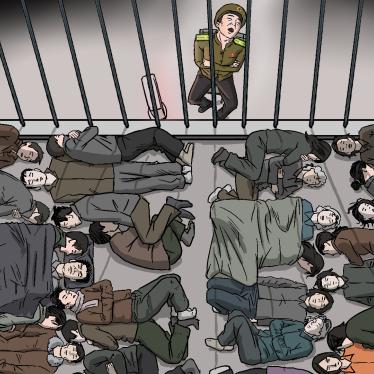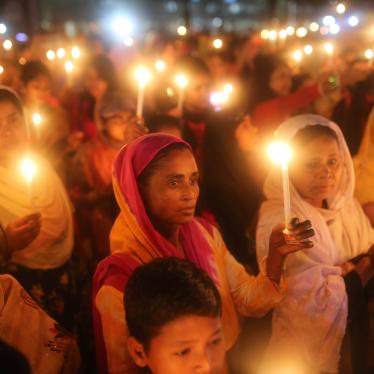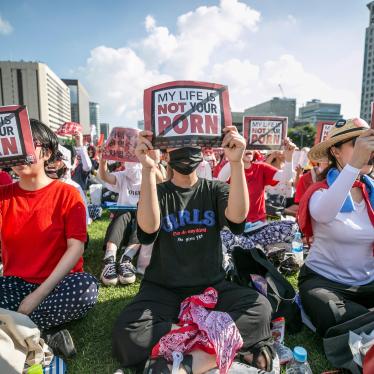In the heart of picture-postcard Broome stands Western Australia’s oldest operating prison, a crumbling vestige of the state’s earlier colonial days.
When we first visited Broome Regional Prison in 2016, we found prisoners living in degrading conditions in dingy, grimy, cramped, and overcrowded cells with some even forced to sleep on the floor near the toilet door.
With rundown infrastructure dating back to 1945, the prison was in disrepair and ill-equipped with only caged enclosures for any physical activity for maximum security prisoners.
Even maintaining basic hygiene was a challenge given the poor state of the bathrooms. Despite costing the taxpayer over $1400 per prisoner per day, among the highest in the state, Broome was by far the worst prison we visited across Australia.
Seven years and millions of dollars later, little has changed. On August 8, 2023, the WA Office of the Inspector of Custodial Services (OICS) released a damning report denouncing the prison as “dilapidated” and “poorly maintained” to the point of being a health and safety hazard with foul-smelling, open drains, persistent mould, water damage, and garden crates used as furniture.
Disturbingly, the report found an underlying, unacceptably racist element to the conditions.
It said, “With 80 per cent of the [prison] population Aboriginal, the sub-standard services and conditions would not have been acceptable in a metropolitan prison where Aboriginal people were in the minority.”
Since 2001, the WA inspector of prisons has published no fewer than seven reports declaring the prison unfit for its purpose in terms varying from “decrepit” to “inhumane.”
Yet hundreds of people spend time in Broome prison each year, with devastating consequences for their physical and mental health.
A previous inspection found that the prisoners felt “depressed and that their physical and mental health was suffering as a result of the [prison] conditions.”
This situation compounds an already serious mental health crisis in WA prisons.
A 2020 study of men who entered the prison system in Western Australia found that over 50 per cent of Aboriginal prisoners had experienced the death of a close family member in the previous 12 months, increasing the risk of depression, self-harm, and suicide.
Entering prison whether on remand or after being sentenced can also trigger distress. In an emblematic case from 2015, Mr Jackamarra, a 36-year-old Aboriginal man with a psychosocial disability (mental health condition), took his own life by hanging in the shower block of Broome prison, just four hours after he was sent into pretrial custody.
Almost eight years later, Broome prison still has no first-night procedures to mitigate the risk of suicide. And according to the inspector’s report, even some staff members remain traumatised about what happened.
While the Department of Corrective Services has since invested in ligature minimisation (no hooks or sharp edges) and renovating ablutions (bathrooms), Broome’s regional prison is yet to carry out all the recommendations from the 2019 coronial inquest, including improving its CCTV capacity.
Alarmingly, the prison is still failing to provide adequate and quality psychosocial support. Only seven per cent of prisoners surveyed by the OICS reported having ‘good’ access to mental health services (with positive elements pertaining to being on-country, close to loved ones, rather than a reflection of corrective services) and only 25 per cent said the services were satisfactory.
Instead of supporting prisoners with psychosocial disabilities, Broome is isolating them in multi-purpose cells designed for punishment and segregation, a stressful, heavily monitored, and sterile environment hardly suited for a person in crisis. The OICS report says that Broome is “depressing, degrading and entirely inappropriate in a modern mental health service context.”
Statewide focuses on reducing access to tools that prisoners can use for self-harm rather than providing meaningful mental health support.
While the State Government has announced $1.4 million to prepare plans for a new prison, the construction is not scheduled to begin until 2027.
In the meantime, it is critical for corrective services to upgrade the infrastructure immediately and provide access to programs, education, and employment opportunities.
They should systematically screen prisoners for disabilities upon entry into prison and provide appropriate support and accommodations.
They also need to overhaul mental health services, in close collaboration with Aboriginal health services and organisations of people with disabilities, to ensure that they are meaningful and comprehensive. And finally, they should improve the quality and frequency of staff trainings on disability and mental health and make sure that all services are culturally competent.
Broome prison is an urgent problem, and it needs fixing right now. People’s lives and wellbeing are at stake.








